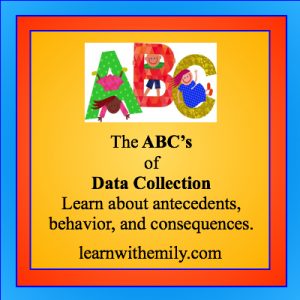This post may contain affiliate links. Affiliate links use cookies to track clicks and qualifying purchases for earnings. Please read my Disclosure Policy, Terms of Service, and Privacy policy for specific details.
Some children exhibit challenging behaviors. These behaviors may not respond to typical discipline approaches. I agree with Dr. Ross Greene’s philosophy that children behave well if they can. Misbehavior is due to missing skills. In order to effectively treat the challenging behavior(s), one must first understand the factors influencing the behavior. ABC data will provide you with the information you need.
The initial steps in changing a behavior are:
- Define the target behavior.
- Consider the ethical implications of changing that behavior.
- Collect initial data. Download a free ABC behavior data sheet here: ABCBehavior
Although you may think you know what is happening, collecting data can reveal a lot of useful information. Initially, it is important to collect enough data to analyze the things in the environment influencing the behavior. Later on, the data collection process can be coded for easy documentation. During initial stages of recoding information, there are 3 main factors you need to track:
- Antecedents
- Behaviors
- Consequences
Antecedents
An antecedent is what happened before the behavior started. When collecting ABC data, be sure to include the setting and situation that happened directly before the behavior occurred. Also consider including other factors that might be affecting the behavior (e.g., only 4 hours of sleep the night before). In your description, be as specific as you can. Here are some examples of antecedents:
- completing long division problems
- Sister turned off Xbox game
- eating dinner and was told he had to wait to get ice cream
- Asked for water and did not get it immediately
Behavior
Keep track of the behavior. If the child is physically aggressive and may hit, kick, or bite, you will want to write down which specific behavior occurred. You should also keep track of how many times that behavior occurred. Use tally marks or just write the total number per incident. You may also want to keep track of how long each behavior episode lasts. After the initial stages of data collection, the documentation process can be simplified using codes for the target behavior.
Consequences
A consequence is what occurs after the behavior. Let go of the layman’s meaning of consequence. In behavior data collection, it really mean the things that occur after the behavior. Here are some examples of possible consequences:
- ignoring the behavior
- walking away
- telling the child, “no.”
- put in time-out
- gave the child a cookie
- talked about the behavior
Here is an example of a completed ABC data sheet:

As you collect data, you will probably be able to refine your target behavior definition(s). Continue taking ABC data for at least 1-2 weeks. At that point, you will be ready to analyze the information you have collected. After the data is analyzed, it will be time to create an effective behavior plan. Be sure to avoid common behavior plan mistakes.
For more information:
Consider reading this book about Applied Behavior Analysis:


